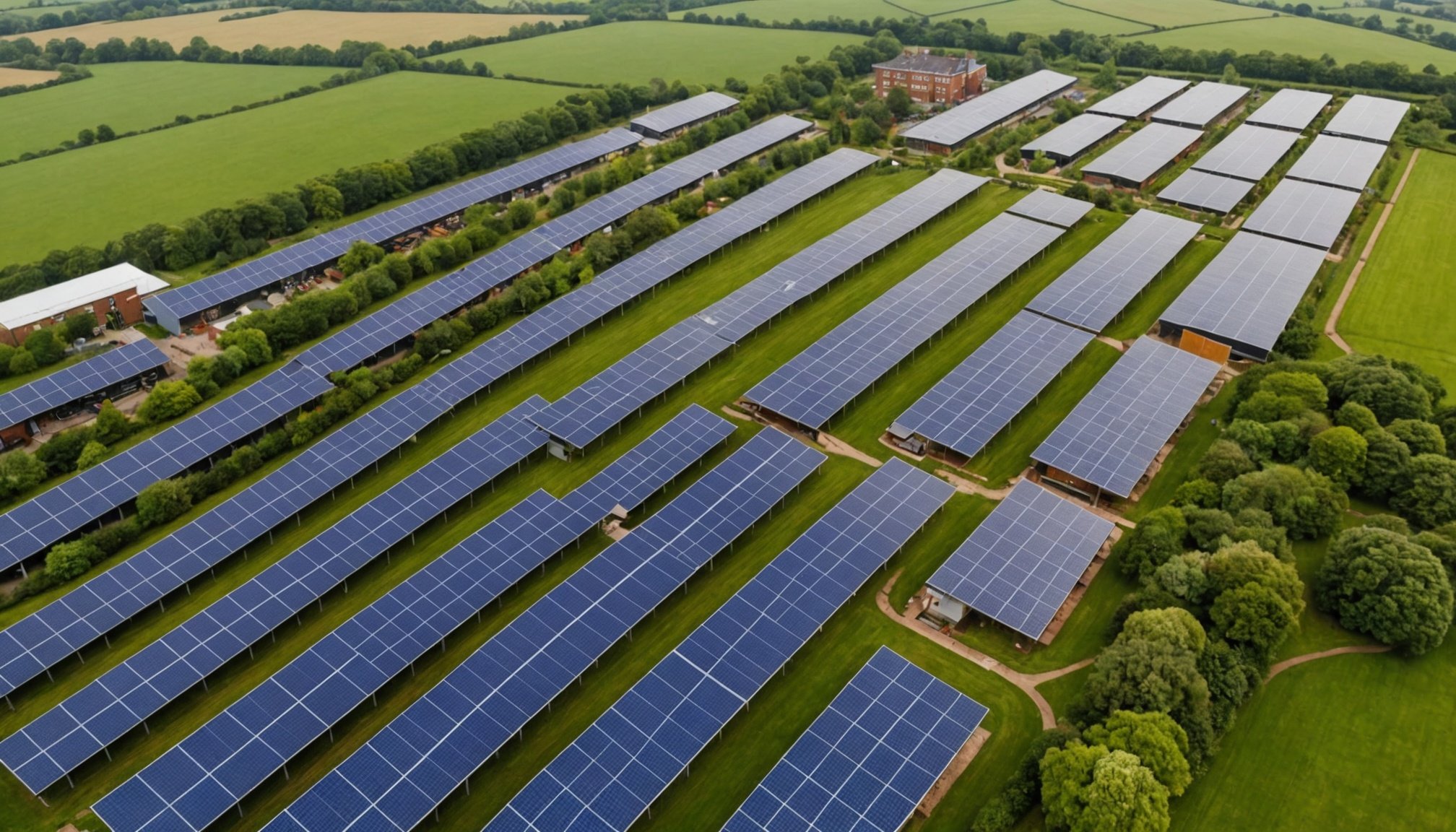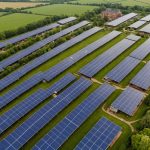Overview of Renewable Energy in UK Property Development
The adoption of renewable energy in UK housing has seen a significant rise, driven by a growing recognition of sustainability. This shift is not just about reducing carbon emissions—it’s about future-proofing homes as well. Currently, many property developers are integrating solar panels, wind generators, and geothermal systems to create energy-efficient structures. These technologies offer a viable path to meet the increasing demand for sustainable housing.
Sustainability plays an essential role in the property development sector. Not only does it contribute positively to the environment, but it also offers cost savings for both developers and homeowners in the long term. More importantly, sustainable developments enhance property value and appeal to eco-conscious buyers.
Also to discover : Navigating Post-COVID Tenant Evictions in the UK: A Comprehensive Landlord’s Guide to the New Legal Terrain
The British government has implemented various initiatives to support renewable energy integration in property development. Programs like the Green Homes Grant and the Smart Export Guarantee (SEG) provide financial incentives to both developers and homeowners. Further, building regulations now require new constructions to adhere to higher energy efficiency standards, encouraging wider adoption.
Continued investment in renewable energy, coupled with government backing, positions the UK as a leader in sustainable property development. This strategic direction promises not only environmental benefits but also economic growth and enhanced energy security.
Topic to read : Transform Your UK Home: The Ultimate Guide to Boosting Comfort and Productivity for Remote Work
Innovative Renewable Energy Technologies
Incorporating renewable energy technologies is essential for sustainable housing, offering groundbreaking solutions to traditional energy challenges. Among these innovations, solar energy solutions stand out. Solar panels can be integrated into residential developments, harnessing sunlight to generate electricity. This not only cuts energy costs but also reduces carbon footprints. The versatility of solar energy makes it appealing; from rooftop installations to solar tiles, options abound that boost energy efficiency.
Another promising area is wind energy. For developers in urban regions, small-scale wind turbines present a potential sustainable option despite space constraints. These turbines can be adapted to buildings, supplementing the energy supply, particularly effective in areas with consistent wind patterns. This innovation proves especially beneficial for high-rise buildings, often exposed to higher wind speeds.
Geothermal systems represent a breakthrough in sustainable housing, offering efficient temperature regulation through geothermal heat pumps. These systems leverage the Earth’s stable underground temperatures to provide heating in winter and cooling in summer, enhancing energy efficiency. The consistent energy savings and low environmental impact make geothermal systems an attractive option for developers committed to sustainability.
In summary, exploring renewable energy technologies like solar, wind, and geothermal systems can propel property developers towards pioneering sustainable homes, thereby redefining the landscape of UK housing.
Best Practices for Integrating Renewable Energy Solutions
To embrace renewable energy in housing projects effectively, certain best practices are critical. First and foremost, conducting comprehensive energy audits is essential. These audits provide a detailed understanding of the energy requirements and opportunities at a site, allowing developers to tailor their renewable energy strategies accordingly. The identification of potential energy-saving measures ensures an informed approach to integration.
Design plays a pivotal role in maximizing the benefits of renewable energy. By designing for efficiency, developers can incorporate architectural features that enhance natural lighting and ventilation. Such designs reduce reliance on artificial energy sources, promoting sustainability. Incorporation of passive solar designs can also contribute to energy efficiency, harnessing sunlight for heating and lighting needs.
To achieve optimal results, collaborating with experts is advised. Partnering with renewable energy consultants and technology firms can provide access to the latest innovations and insights. These collaborations can guide the implementation of suitable technologies, such as solar panels or geothermal systems, that align with project goals.
Thus, these best practices—energy audits, efficient design, and expert collaborations—underscore the strategic avenues for integrating renewable energy solutions into housing projects, paving the way for sustainable and innovative urban landscapes.
Successful Case Studies in the UK
Featuring successful projects can illuminate the potential of integrating renewable energy in UK housing. One notable case is BedZED, the UK’s largest carbon-neutral community. Located in Sutton, it utilizes a mix of solar panels, wind cowls, and biomass heating systems, showcasing an inspiring example of how sustainable options can be effectively deployed.
These case studies underscore the importance of early adopters who paved the way for renewable energy technologies. Through their innovative practices, they have redefined community living, offering valuable insights and lessons. For instance, the Hockerton Housing Project in Nottinghamshire highlights how earth-sheltered homes with photovoltaic panels and wind turbines can drastically reduce energy consumption.
Such pioneering projects have significantly impacted the environment while creating close-knit communities around sustainability. The emphasis on locally sourced materials and energy efficiency not only fosters community spirit but also promotes environmental stewardship. These examples demonstrate the transformative potential of adopting renewable energy solutions in property development.
By examining these successful projects, developers can gain a better understanding of the economic and environmental impacts, offering a blueprint for future developments. The insights from these initiatives foster continual improvement and inspire more widespread adoption of renewable technologies.
Regulatory Framework and Financial Incentives
For developers of UK housing projects, understanding the regulatory framework surrounding renewable energy is crucial. To integrate renewable technologies effectively, developers must adhere to specific regulations that guide energy standards and designs. These regulations not only ensure that new constructions meet sustainability criteria, but also encourage the inclusion of renewable energy solutions through mandated energy efficiency levels.
Moreover, financial incentives play a pivotal role in promoting renewable energy adoption. The UK government offers a range of grants and support programs such as the Smart Export Guarantee. These financial incentives are instrumental for developers looking to offset the costs associated with implementing renewable energy technologies. Additionally, they provide a viable path to achieve commercial competitiveness through sustainable practices.
When considering renewable energy projects, navigating planning permissions is an essential step. Developers must engage with local authorities to secure the necessary approvals for installations like solar panels and wind turbines. Understanding local policies and zoning laws ensures compliance and smooth implementation. This awareness not only streamlines project timelines but also strengthens the case for sustainable development, reflecting an alignment with national sustainability goals.
Benefits of Embracing Renewable Energy
Embracing renewable energy in property development brings a wealth of benefits, significantly impacting both developers and homeowners. One of the most compelling advantages is the economic aspect. For property developers, integrating renewable technologies can lead to long-term cost reductions due to decreased reliance on non-renewable energy sources. This cost-efficiency not only improves financial margins but increases property values, making homes more attractive to purchasers who are conscious about their environmental footprint.
For homeowners, renewable energy adoption translates into substantial savings on utilities. Solar panels or geothermal systems, for instance, can significantly slash electricity and heating bills over time. As energy prices continue to fluctuate, the stability provided by renewable sources lends a sense of financial security, enabling homeowners to better manage household expenditures.
Furthermore, developers who incorporate sustainability into their projects often enhance market competitiveness. Properties designed with renewable technologies attract a wider base of eco-conscious buyers, helping developers stand out in a crowded market. This forward-thinking approach not only addresses the growing demand for sustainable housing but also fortifies the brand as an environmentally responsible entity. Ultimately, embracing renewable energy presents a strategic advantage, driving growth and fostering resilience in an ever-evolving sector.
Future Trends in Sustainable Housing
Sustainable housing continues to evolve at a rapid pace, with future trends pointing towards an increase in innovative solutions. As technology advances, new methods for incorporating renewable energy are emerging, shifting how UK housing will be conceptualized. Among these are smart home technologies that optimize energy use by monitoring consumption patterns and adjusting systems in real-time.
Emerging technologies like advanced photovoltaic cells and energy storage systems are set to revolutionize the industry further. Lightweight, flexible solar panels that can be incorporated into roofs or even walls are on the horizon, offering an integrated approach to energy capture. Meanwhile, improved battery technology allows for better energy retention, crucial for consistency in energy supply.
This wave of innovation extends beyond individual technologies. Future housing designs will need to be adaptable and resilient, ready to incorporate new systems as they develop. Adaptability includes creating modular homes that can easily integrate the latest sustainability enhancements without significant overhauls.
Predicting the growth and adaption of renewable energy solutions will be vital for property developers aiming to remain competitive. As sustainability becomes not just an option but a necessity, those proactively embracing these trends will lead the way in delivering sustainable, future-proof housing.







